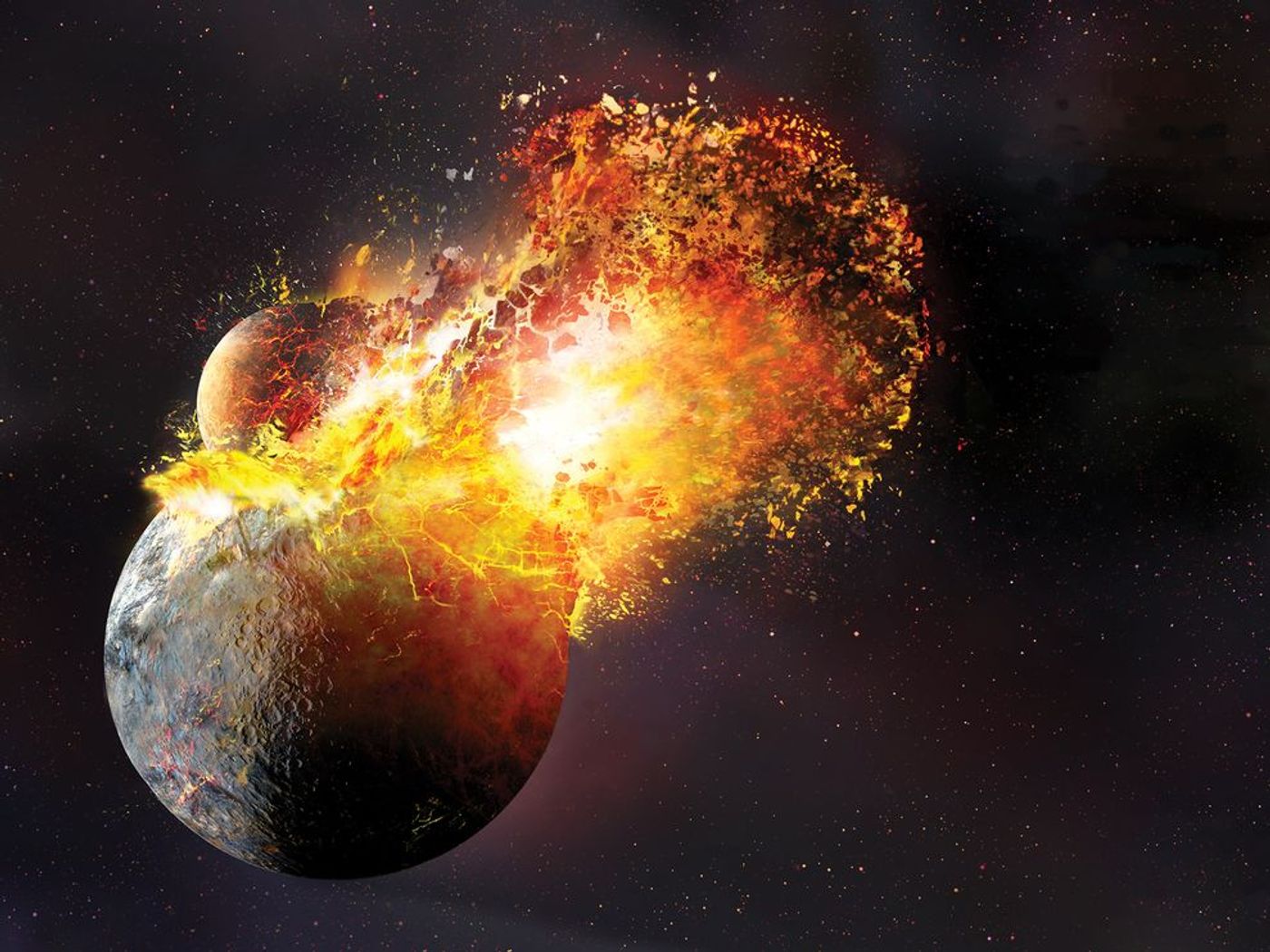New Theories Arise Over the Formation of the Moon
The surface of the Earth and the surface of the Moon share similar surface compositions. One of the main differences between the two that has baffled scientists for years is that the Moon is significantly lacking something that the Earth has – volatile metals – such as potassium, sodium, and zinc. These elements are volatile because of the fact that they can react so easily when exposed to normal conditions.
Since the Earth has a plentiful supply of these volatile metals, and the Moon seems to have very little, if any, it’s suggested in a new study that the formation of the Moon may have been due to a large Mars-sized object smashed into the Earth, causing not only a hunk of the Earth to go flying into Space, but also a large dust disk to accumulate around the Earth’s surrounding space.
"One of the key differences, that's been known since the Apollo sample return, is that the Moon is much more depleted in so-called volatile elements - those that vaporize easily as you heat up material," said Dr. Robin Canup, the new study's lead author, from the Southwest Research Institute in Colorado, US. "And the origin of this depletion has been essentially unknown.”

This disk is the key to the Moon’s formation, and it’s also potentially the answer to why the Moon lacks the volatile materials the Earth has. The disk can be split into two parts – the inner and the outer.
Because of all of the heat in the inner part of the disk where the chunk of rock was forming while orbiting the Earth, volatile metals were never able to build up on the surface of the young would-be Moon because they were being vaporized. The surface is the only part of the Moon that we’ve ever sampled, which would explain why the surface is lacking so much of the volatile materials that the Earth has.
As for the volatile metals that were surrounding the Earth in the outer disk after the impact, rather than getting pulled towards the Moon and becoming a part of it, they likely rained back down to the Earth. Any volatile materials in the outer disk would have been kept cooler than those getting absorbed by the Moon in the inner disk.
This theory could explain why our planet has such as volatile material-rich surface contrast to the Moon. So far, it’s the most detailed explanation to date.
Source: Nature Geoscience








